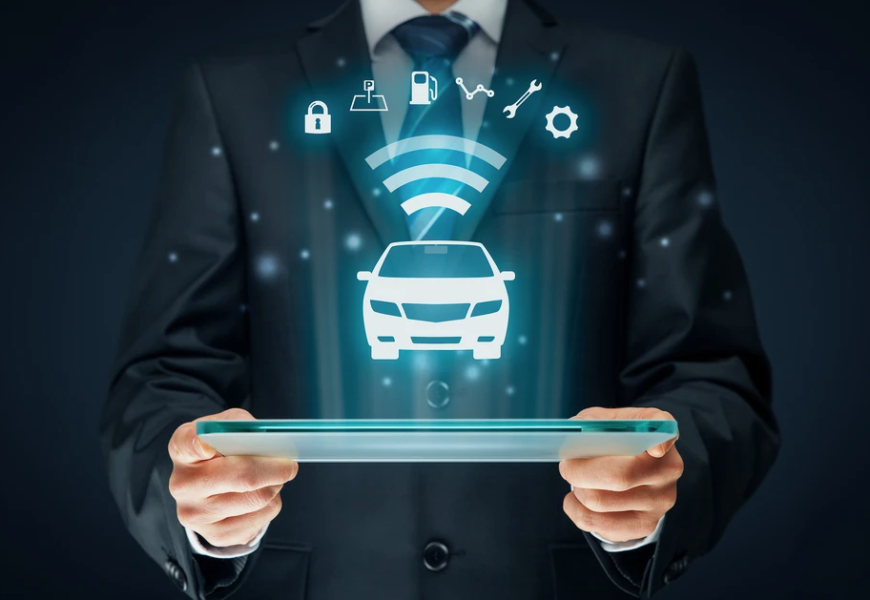The automotive world is evolving faster than ever, and High-Performance Computing (HPC) systems are at the heart of this transformation. Think about how cars are becoming smarter, safer, and more eco-friendly—that’s HPC in action.
These systems help automakers tackle complex challenges, from designing futuristic vehicles to making self-driving cars a reality.
They analyze massive data, run real-world simulations, and streamline manufacturing processes to bring innovation to life. With HPC, the industry is shifting gears toward a more connected and sustainable future.
The high-performance computing market in Germany is expected to reach a projected revenue of US$ 6,366.0 million by 2030. A compound annual growth rate of 6.3% is expected in Germany’s high-performance computing market from 2024 to 2030.
Curious how this technology is reshaping what we know about cars?
Here are five ways HPC systems are driving the change:
1. HPC Systems Fosters Autonomous Vehicle Development
The most exciting development in the automotive industry today is the rise of autonomous vehicles. Self-driving cars rely on complex algorithms and massive amounts of data to make real-time decisions on the road. This is where HPC systems come in. By processing data from sensors, cameras, and radar, HPC systems enable the car to understand its environment, detect obstacles, and react accordingly.
According to a report, AI plays a crucial role in developing and operating autonomous vehicles. Integrating AI algorithms enables autonomous vehicles to navigate, perceive, and adapt to dynamic environments, making them safer and more efficient.
Without the power of HPC, autonomous vehicles would struggle to make the decisions required for safe driving. These systems help speed up the development process, allowing manufacturers to test and improve self-driving cars faster than ever before.
Key contributions of HPC systems to autonomous vehicles:
- Real-time data processing from multiple sensors
- High-speed simulations for testing driving scenarios
- Improved machine learning models for better decision-making
2. HPC Optimizes Vehicle Design With Simulations
In the traditional automotive design process, engineers rely on prototypes to test and refine vehicle concepts. With HPC, simulations have become much more advanced and accurate. Engineers can run simulations on a virtual model of a car, testing everything from crash scenarios to aerodynamics, all before building a physical prototype.
This ability to run detailed simulations saves time and money. It also allows manufacturers to experiment with more innovative designs. With HPC, they can simulate a variety of conditions and quickly identify the best designs for performance, safety, and efficiency.
HPC’s impact on vehicle design:
- Faster testing of vehicle prototypes
- Ability to test extreme conditions and scenarios
- More innovative designs due to advanced simulations
3. HPC Accelerates Manufacturing Processes
The manufacturing side of the automotive industry has greatly benefited from HPC systems. By applying powerful computing power, automotive manufacturers can streamline production, reduce costs, and improve quality. HPC systems can monitor the entire production process in real-time, identifying potential bottlenecks or defects before they become significant problems.
For example, in additive manufacturing (3D printing), HPC is used to optimize the design of parts and improve the printing process. This leads to faster production times and more precise parts. By integrating HPC with smart manufacturing technologies, companies can meet demand more efficiently while maintaining high quality.
How HPC transforms manufacturing:
- Real-time monitoring and analysis of production lines
- Faster design and production of parts through 3D printing
- Improved quality control and defect detection
4. HPC Enhances Vehicle Safety Features
Safety is always a top priority in the automotive industry, and HPC is making a significant contribution here as well. By using HPC systems to run advanced simulations, manufacturers can test a car’s safety features in a variety of conditions. These simulations are faster and more accurate, allowing engineers to identify potential safety issues early in the design process.
HPC helps engineers create better crash models and refine safety features like airbags, seat belts, and crumple zones. By processing massive amounts of crash data, manufacturers can ensure that vehicles are safer and more resilient on the road.
Safety improvements driven by HPC:
- Enhanced crash simulations and testing
- More accurate safety feature designs
- Faster identification of potential safety issues
5. HPC Powers Up Vehicle Performance Testing
To make cars perform at their best, manufacturers conduct extensive testing under different conditions. HPC systems allow them to simulate and analyze performance metrics in ways that were previously impossible. From engine performance to fuel efficiency, HPC systems can quickly process large volumes of data to identify areas for improvement.
By leveraging HPC, manufacturers can test performance under numerous driving conditions. This data-driven approach helps optimize vehicle performance, leading to better cars that are faster, more fuel-efficient, and more eco-friendly.
How HPC boosts vehicle performance:
- Real-time data analysis for performance optimization
- More accurate testing under various driving conditions
- Faster innovation in performance-enhancing technologies
Conclusion: HPC Systems Driving The Future Of Automotive Industry
High-Performance Computing (HPC) is clearly playing a pivotal role in transforming the automotive industry. From autonomous vehicle development to manufacturing optimization and safety features, HPC is enabling faster, smarter, and more innovative processes.
For manufacturers and automotive companies looking to stay ahead of the curve, embracing HPC is no longer optional. It’s a necessity to maintain competitiveness, drive innovation, and meet the growing demands of consumers for safer, more efficient, and environmentally friendly vehicles.
In the future, as HPC systems continue to evolve, we can expect even greater integration of AI, machine learning, and big data analytics. This combination will further propel the automotive industry into a new era of innovation and performance.









